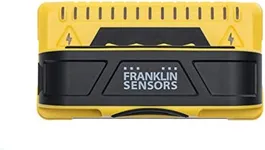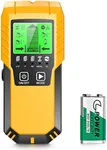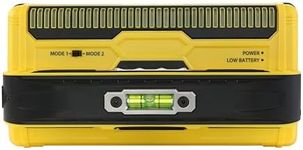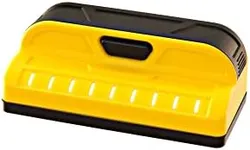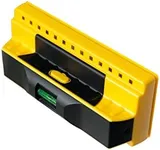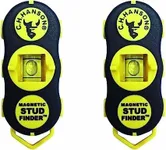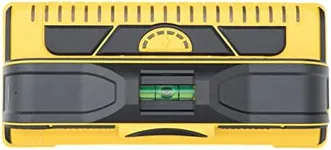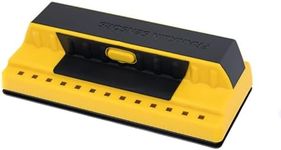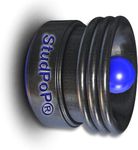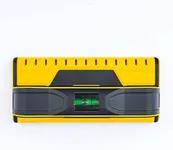Buying Guide for the Best Stud Finder For Tile
Choosing the right stud finder for tile can be a bit tricky, but with the right knowledge, you can make an informed decision. A stud finder is a device used to locate framing studs behind the surface of walls, usually drywall. When working with tile, it's important to have a stud finder that can accurately detect studs through the dense material. Here are some key specifications to consider when selecting a stud finder for tile, along with explanations to help you understand their importance and how to choose the best one for your needs.Detection DepthDetection depth refers to how deep the stud finder can sense objects behind the wall surface. This is crucial when working with tile, as tiles and their adhesive layers can add significant thickness. Detection depths typically range from 0.5 inches to over 2 inches. For tile, you should look for a stud finder with a detection depth of at least 1.5 inches to ensure it can penetrate the tile and locate the studs accurately. If you have thicker tiles or additional layers, opt for a model with greater depth capability.
Sensor TypeStud finders come with different types of sensors, including magnetic and electronic. Magnetic stud finders detect the metal nails or screws in the studs, while electronic stud finders use sensors to detect changes in the wall density. For tile, electronic stud finders are generally more effective because they can provide more accurate readings through dense materials. If precision is important for your project, an electronic stud finder is the better choice.
Display and IndicatorsThe display and indicators on a stud finder help you understand what the device is detecting. Some models have simple LED lights, while others feature LCD screens that provide more detailed information. For tile, a stud finder with a clear and easy-to-read display is beneficial, as it can help you pinpoint the exact location of the studs. Look for models with visual and audio indicators to make the detection process more intuitive.
Material DetectionSome advanced stud finders can detect different types of materials, such as wood, metal, and live wires. This feature is particularly useful when working with tile, as it can help you avoid drilling into electrical wiring or plumbing. If you are working in an area where multiple materials might be present, choose a stud finder with multi-material detection capabilities to ensure safety and accuracy.
CalibrationCalibration is the process of setting the stud finder to accurately detect studs behind the wall. Some stud finders require manual calibration, while others have automatic calibration features. For tile, automatic calibration can save you time and reduce the risk of errors. If you prefer a hassle-free experience, opt for a stud finder with automatic calibration. However, if you are comfortable with a bit of setup, manual calibration models can also be effective.
Ergonomics and DesignThe ergonomics and design of a stud finder can affect how easy it is to use, especially when working on vertical surfaces like tiled walls. Look for a stud finder with a comfortable grip and a design that allows for easy maneuvering. A lightweight and compact model can make the task less tiring and more precise. Consider how the stud finder feels in your hand and whether it will be comfortable to use for extended periods.
